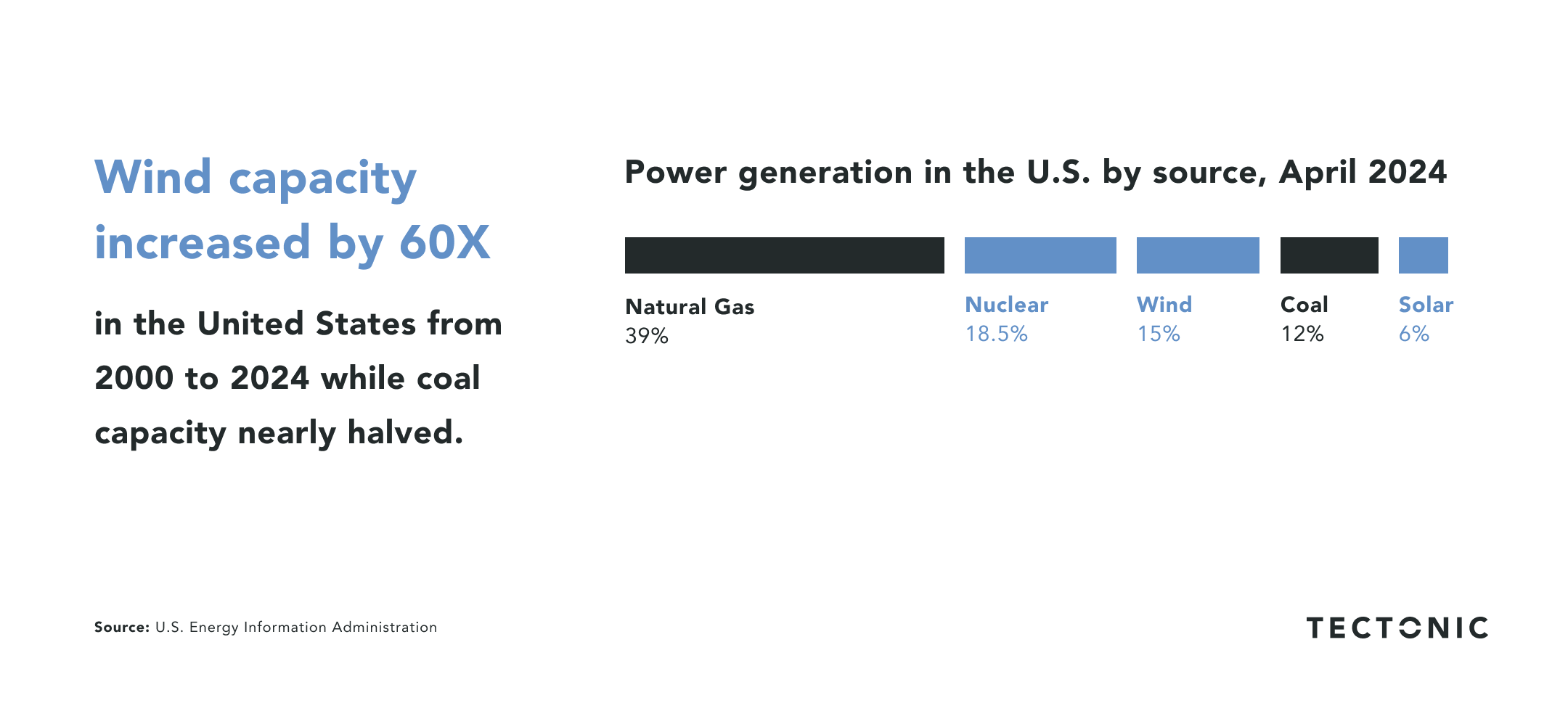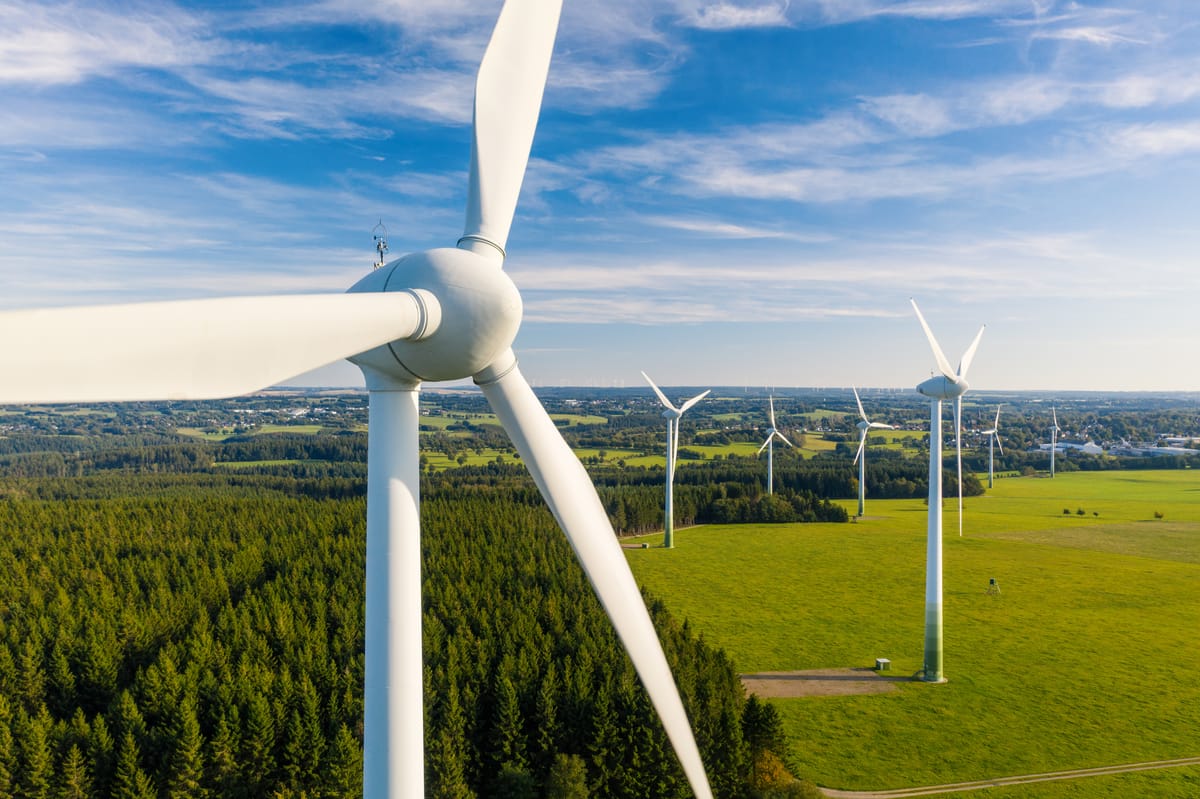This week's brief dives into the continued scale of renewable energy capacity, long-distance electric vehicles, and new support for the global plastics treaty.
Follow Tectonic on Instagram and LinkedIn for regular updates about innovators and innovations moving climate ambition into action.
Wind blows past coal: According to the U.S. Energy Information Administration, wind turbines generated more electricity than coal-burning power plants in March and April. This was the first time the nation reached that milestone for two consecutive months, and it was the result of technological advances that have lowered costs, increased public sector investment, and regulations mandating utilities transition away from fossil fuels.

An electric vehicle can save drivers up to $100 per month: A new report from environmental nonprofit Coltura found that an average American driver saves 8.1 cents per mile on fuel costs when driving an EV car compared to a gas car. This amounts to a savings of $100 per month for the average driver. The savings vary by state based on the cost of gas and electricity, with Washington having the greatest savings at 13.1 cents per mile and Massachusetts with the smallest at 4.7 cents.
New EVs double driving range: A new set of Extended Range Electric Vehicles, or EREVs, in China are doubling the typical distance per charge to more than 600 miles. The vehicles contain a small gasoline-powered internal combustion engine on board with the sole purpose of automatically recharging the battery. Sales of EREVs in China have more than doubled over the past year and make up 30% of the nation's hybrid sales. Stellantis will begin rolling out similar models in the United States next year with an EREV version of its Ram 1500 pickup truck featuring a 690-mile driving range.
The United States backs more robust global plastics treaty: The United States will support a global treaty calling for reducing annual plastic production and categorizing concerning chemicals. Major plastic and petrochemical producers like Saudi Arabia and China oppose the measure, arguing for less focus on production and more on waste management. Treaty negotiations are targeting a conclusion at a summit in Busan, South Korea this November, though significant divisions have raised concerns about the ability to close negotiations by then.
SpaceX to launch satellite to track methane: The nonprofit Carbon Mapper and SpaceX will launch Tanager-1, the second satellite launched in the last six months by a nonprofit to track methane and carbon dioxide emissions. Roughly the size of a mini-fridge, the satellite can classify emissions within 50 meters of the source. It will focus on tracking methane super emitters, including oil and gas wells, large livestock operations, landfills, and industrial refineries. One percent of super-emitting sources account for 20-60% of methane emissions from U.S. oil and gas basins.
IRA funding goes to Republican districts: The Financial Times found more than 80% of investment in large-scale clean energy and semiconductor manufacturing from the passage of the Inflation Reduction Act and the Chips and Science Act is committed to Republican congressional districts. The analysis looked at more than 110 projects worth at least $100M that have been announced over the last two years and found Republican-governed states such as Georgia, South Carolina, and Ohio were among the top recipients. Red states like Texas, Oklahoma, and Florida were also among the top states for cleaner energy installation last year.
Billion-dollar battery investment: Natron Energy will invest $1.4 billion to build a plant in North Carolina to develop batteries leveraging sodium, an abundant mineral that can produce cheaper, safer alternatives to lithium-based batteries. This is part of more than $100 billion of investment pledges made by businesses into EV and battery factories in the United States over the past two years since the IRA was passed.


